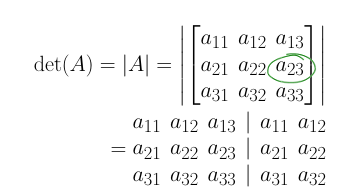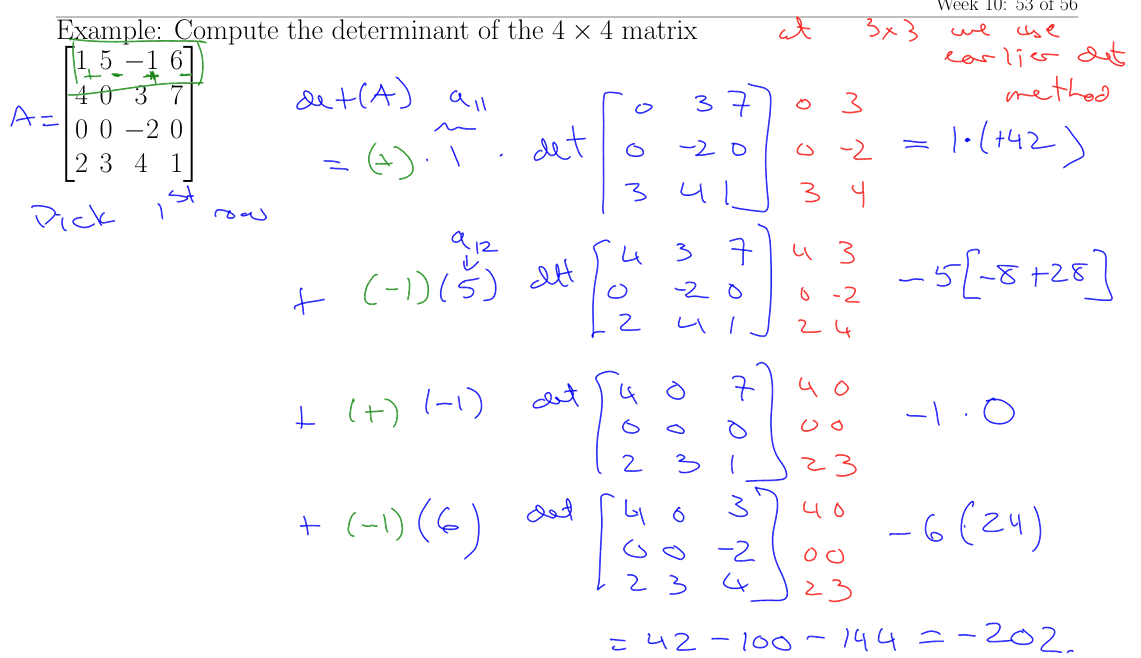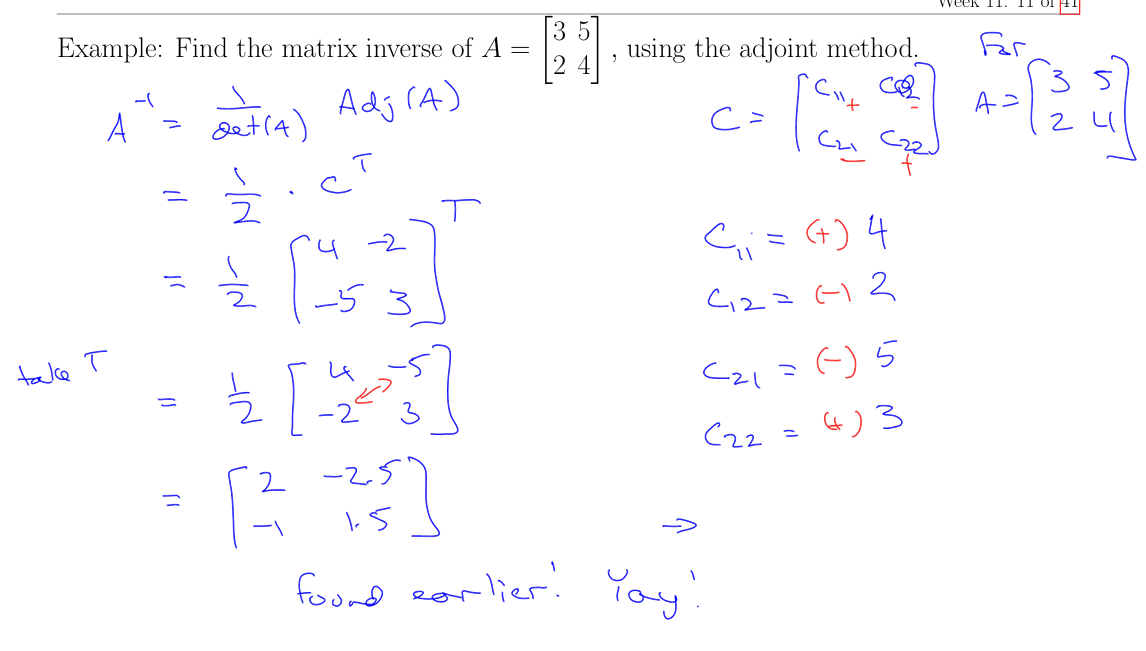Week 10- Invertible Matrices and Determinants
1/14
There's no tags or description
Looks like no tags are added yet.
Name | Mastery | Learn | Test | Matching | Spaced |
|---|
No study sessions yet.
15 Terms
When is the matrix product defined?
If the inner dimensions agree:
(n x k)((k x m)
When is a matrix invertible?
If it is square (n x n)
How do you test for invertibility?
Using the following conditions:
A has n columns.
To be invertible, L must be one-to-one and onto.
This means that the kernel of A is just 0, or ker(A) = just {0}, or dim(ker(A)) = 0
So the rank of A must be n
So the columns of A must be linearly independent
Algorithm for computing the inverse matrix
If A is an invertible n × n matrix, write the following double-width augmented matrix:
[ A | In ].
Use row operations to put this combined matrix into RREF. The resulting matrix will be: [ In | A−1 ]
where A−1 is the inverse of A
![<p>If A is an invertible n × n matrix, write the following double-width augmented matrix: </p><p>[ A | I<sub>n</sub> ]. </p><p>Use row operations to put this combined matrix into RREF. The resulting matrix will be: [ I<sub>n</sub> | A−1 ] </p><p>where A−1 is the inverse of A </p>](https://knowt-user-attachments.s3.amazonaws.com/e5bbebc0-609b-4e58-bcb1-ce02ed92816b.png)
Determinant
A single scalar value associated with linear transformation L (and its associated standard matrix A)
The magnitude of D represents the overall scaling done by the transformation.
The sign of D is related the directional or orientation flips done by the transformation
Computing determinant for 2 × 2 matrices

Computing determinant for 2 × 2 matrices
Copy the 1st two columns beside the matrix, then
Multiply down the diagonals, and up the diagonals as shown, then
Add the down-right diagonal products, and subtract the up-right diagonals.

How could you find a perpendicular vector to two 3D vectors?
cross-multiplying two 3D vectors (computing determinant) will produce a vector perpendicular to both
Computing the determinant for n x n matrices
Laplace Expansion Formula:
The “checkerboard” pattern of signs. This always starts as a + in the top-left corner, and then alternates for every vertical or horizontal step taken
The (n−1)×(n−1) sub-matrix associated with any entry. For any entry aij in an n×n matrix, we make a smaller sub-matrix by crossing out the row i and column j that entry is in.
Formally:
Pick any row or column.
For every entry aij in that row or column: compute (checkerboard sign) ×(aij)× (det of sub-matrix for aij)
Take the sum of all the values from step 2

Determinant in terms of scaling
det(A) represents the scaling effect of A as a transform on areas in R2, volumes in R3
Determinant in terms of invertibility of matrices
det(A)=0 —> A is not invertible
transform A collapses at least 1 dimension
ker(A)=/ just {0}
A is not injective
det(A)=/ 0 —> A is invertible
Determinants when multiplying matrices
B x A matrix product
det(BA) = det(B) x det(A)
Determinants of inverse matrices
det(A) det(A-1) = det(In) —> det(A-1) = 1/det(A)
Inverse matrices using adjoint matrices
A−1 = 1/det(A)Adj(A) where Adj(A) is a new matrix, based on determinants.
Adj(A) = CT, where:
The T indicates a transpose, or a reflection of values across the diagonal.
The C matrix is the cofactor matrix of A, which is defined element-by-element as Cij = (−1)i+j det(Mij), and
Mij is the sub-matrix of A with row i and column j removed
